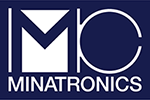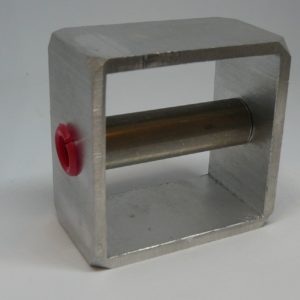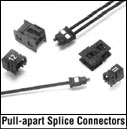Description
LIGHTGARD – NUCLEAR WASTE AND WEAPONS MONITORING
LightGard Fiber Optic Security Systems have been successfully used since 1986 as an aesthetic means (no chains and padlocks or bolt-down devices) for securing computers and their associated peripherals and internal parts from theft – 24 hours a day – even as the computers and rooms where they are located are being actively used by authorized individuals, visitors, and cleaning personnel.
LightGard is designed to be false alarm free due to minor bumping, adjusting viewing angles, or minor locational movement within a work station area. Over one million computers and/or computer peripherals are currently being protected by LightGard Security Systems at leading colleges and universities throughout the USA and Canada. (See our web pages for partial list of users.
Due to recent international threats and the new awareness of terrorism activity there is a very possible potential catastrophe from nuclear materials or from having sophisticated weapons getting into the wrong hands through theft of the items. The LightGard’s highly sophisticated new random pulse rate beam of light, corrosion and tamper free plastic cable and explosion free characteristics make it an ideal choice as a method for monitoring nuclear waste, weapons storage areas, explosive storage areas, water treatment plants, and positional locations of ICBMs.
In November 1995 Sandia Laboratories did a study (SAND 95-2279.UC-515) entitled “Active Fiber Optic Technologies used as Tamper-Indicating Devices” (TIDs) which studied new fiber optic active seal technologies (AST) that can be used at DOE facilities. Here is a quote: “Such a system would allow minimal required access into vaults to verify contained tamper-indicating device’s integrity while ensuring container content accountability”. Among other parameters, the fiber optic cable was subjected to high humidity, as well as high doses of radiation without substantial degradation.
The LightGard system was one of the most cost effective methods in the study and can now be installed for substantially less cost than at the time of the study due to longer loop lengths and due to new technologies and better Central Processing efficiencies as well as new methods for storing and retrieving historical data.
The LightGard System is totally free from the false alarms that plague the supplier of the glass fiber optic system and has the additional benefit of being easily installable by relatively untrained technicians who need only about one hour of instruction in order to be proficient in LightGard installation techniques.
In June of 2000 TRW did a study for the Defense Threat Reduction Agency (DTRA) regarding Tag and Tamper Indicating Devices (TIDs) for monitoring with the idea of being able to monitor ICBMs and other types of missiles and weapons. The study required that the TIDs such as the LightGard Fiber Optic Loop be not expected to show any degradation through low and high temperature extremes as well as high humidity, icing/freezing rain, fungus growth, solar radiation, temperature shock, salt fog, wind and blowing sand. The LightGard Fiber Optic Loop is ideally suited for these types of environments.
Since the LightGard Fiber Optic Loop can not be bypassed, as wired systems can be bypassed with a “Jumper Wire”, it is ideal for protecting numerous items which can be located anywhere along the up to 400 foot long fiber optic loop length. Having “pull apart” dry non-polish (DNP) mini splice points to facilitate servicing or removing protected items from the loop does decrease the recommended loop length. However, by using the new high efficiency factory made terminations, 350 foot loop lengths are now possible with up to 15 pull-apart splice points which can be placed along the loop’s length for serviceability.
The new LightGard III models have three power settings for various loop lengths and the unit’s housing is tamper protected. The new, soon to be available, totally wireless version of LightGard III will operate on two AA sized lithium batteries for four to eight years and will have slightly less loop length capability in order to conserve battery life. The battery condition will be constantly monitored and a low battery condition will be reported to the Central Processing unit prior to system failure from a low battery condition.
The highly versatile 12 volt DC “Hardwire” LightGard units with built in end-of-line resistor can be connected by fully supervised wiring to any 12 volt Fire or Burglary Alarm Panel, Card Access or HVAC Panel. It also can serve as an ideal way to trip the alarm input circuit of a CCTV switcher to activate a CCTV Camera and/or recorder to record, in real time, the events that are occurring at the location of the alarm at the time of the alarm.
To protect numerous 55 gallon tanks of nuclear waste, one simply has to thread the Fiber Optic Loop through the bolts that hold the lids on. Drill a small hole through the bolt that is large enough to pass the one eighth inch fiber through. To protect nuclear material in hospital equipment simply attach the “Moon Traps” to the device to be protected. If the device has unique devices that are attached to the core device, they can usually be protected by the various sized “Mouse Trap” types of devices. Purchase an appropriate number of LightGard III devices, Fiber Optic Cable, and splice point accessories.
For weapons monitoring at an Armory, simply pass the Fiber Optic Cable through the trigger guards, or use the “Loop Trap” device to protect individual guns.





Reviews
There are no reviews yet.